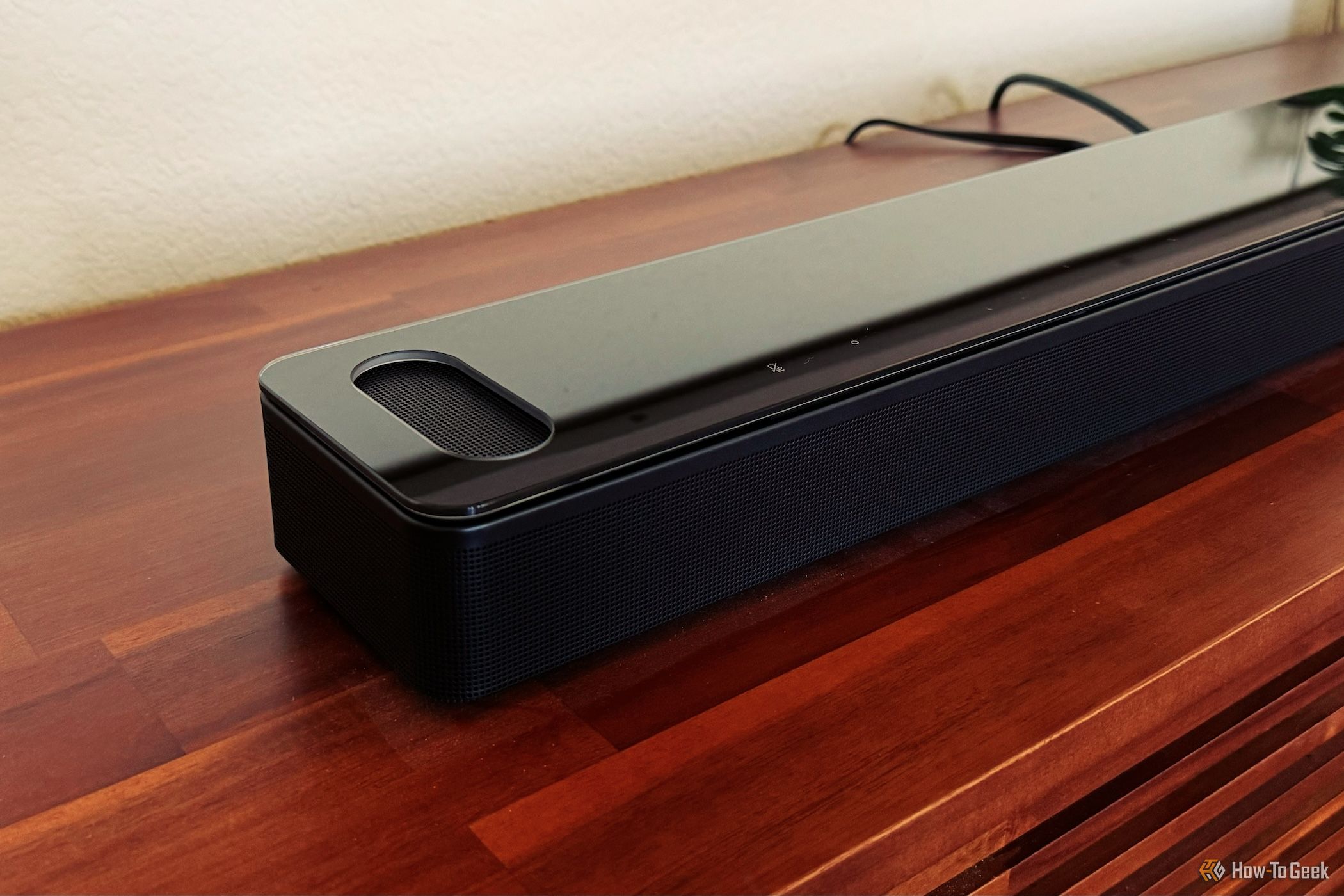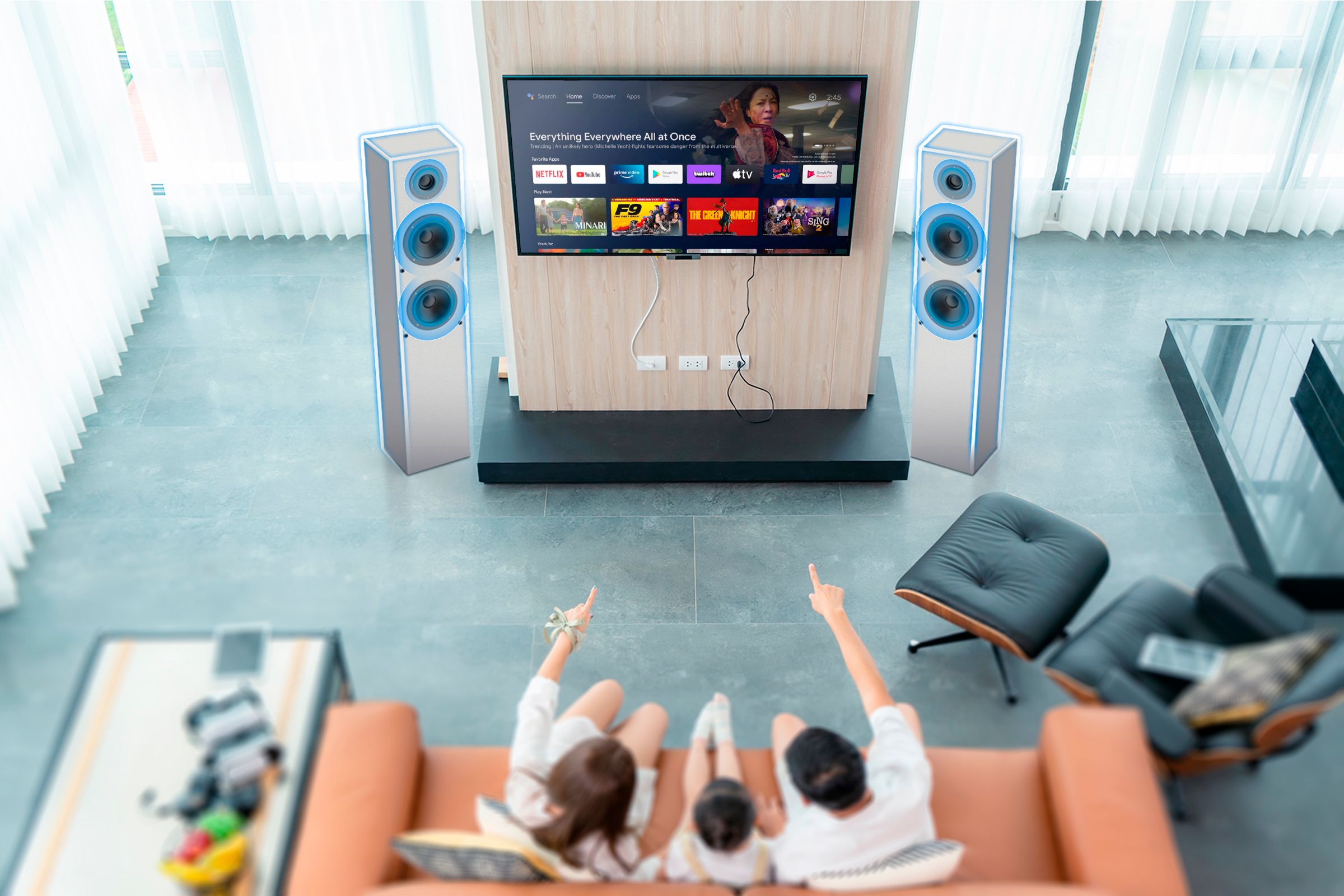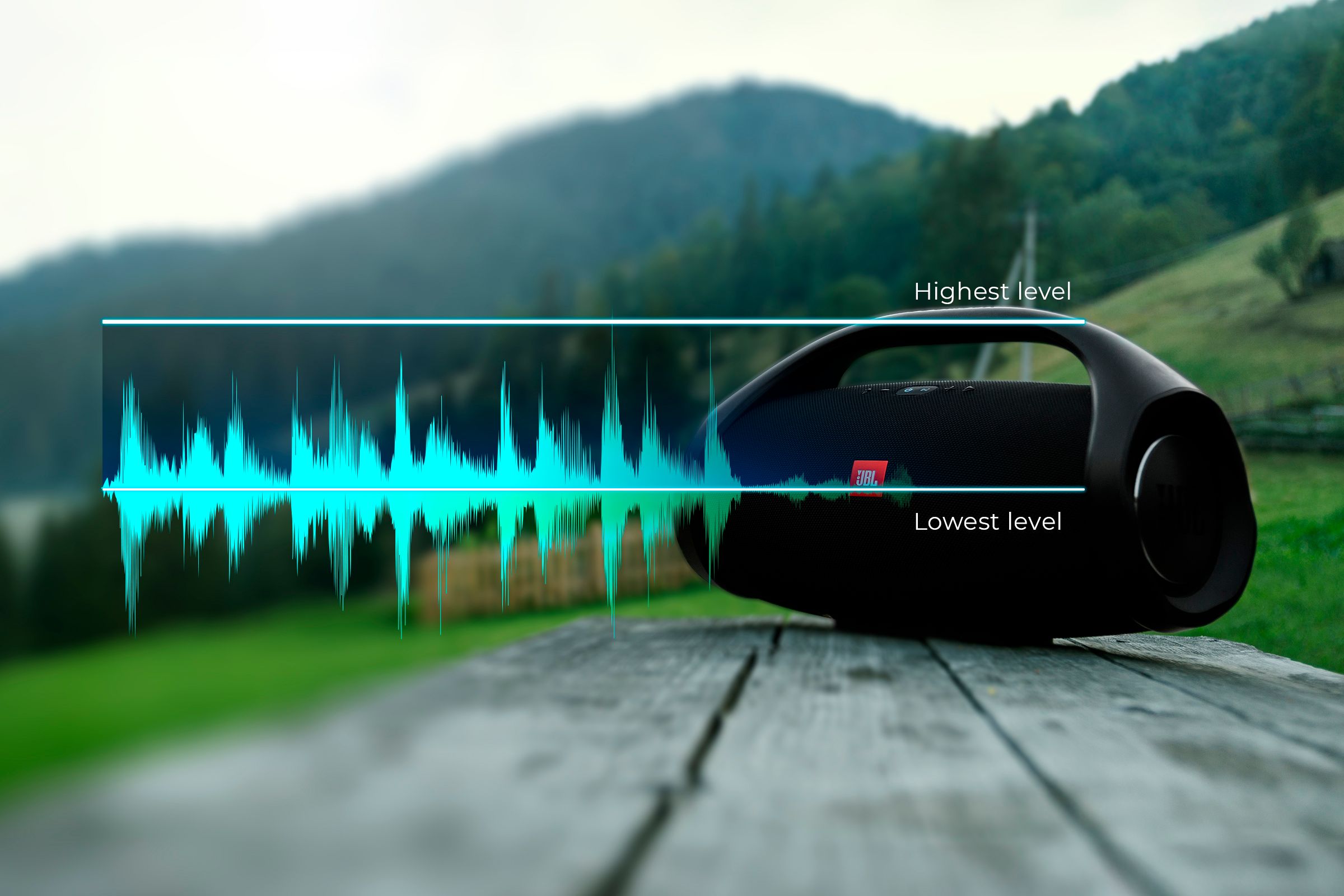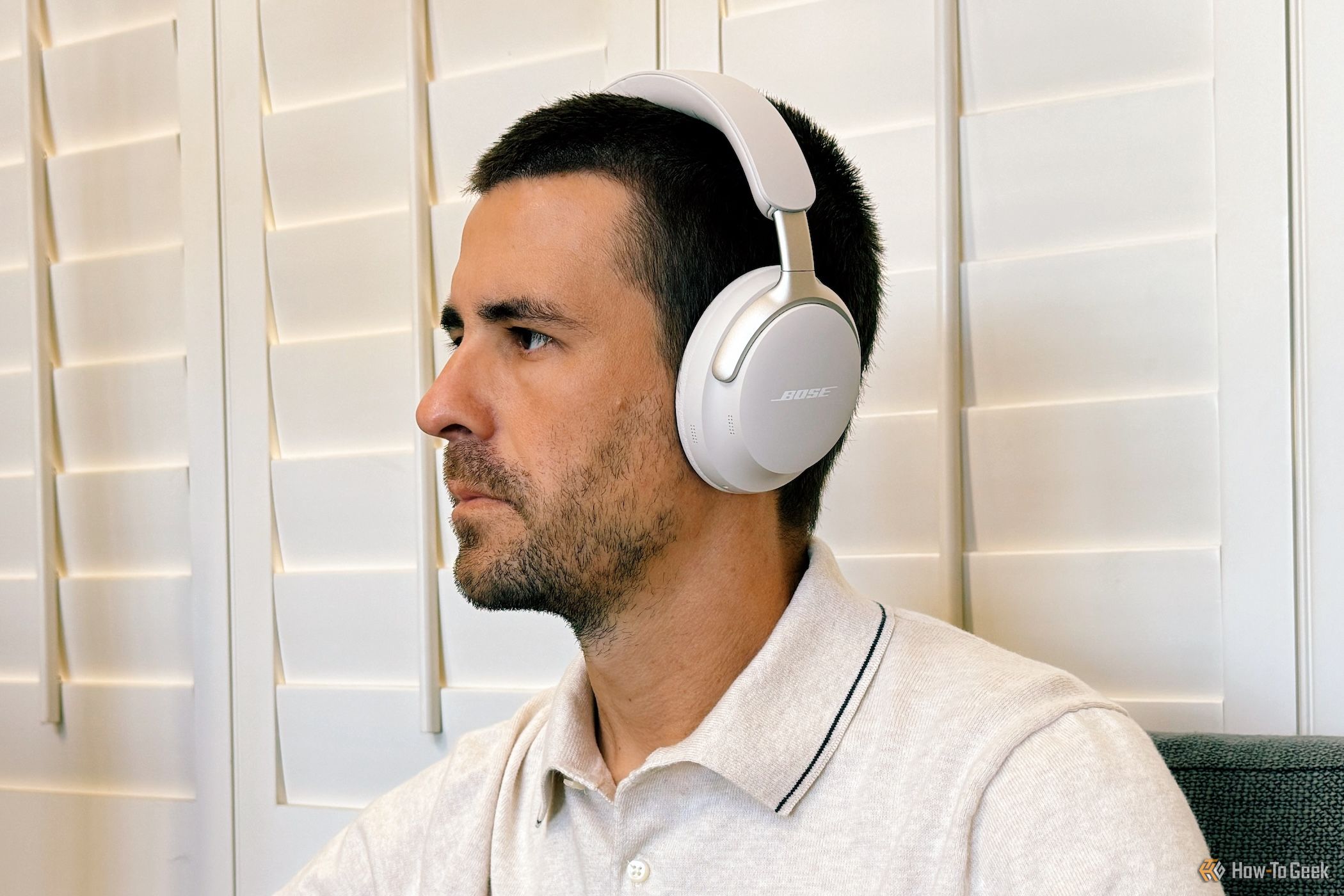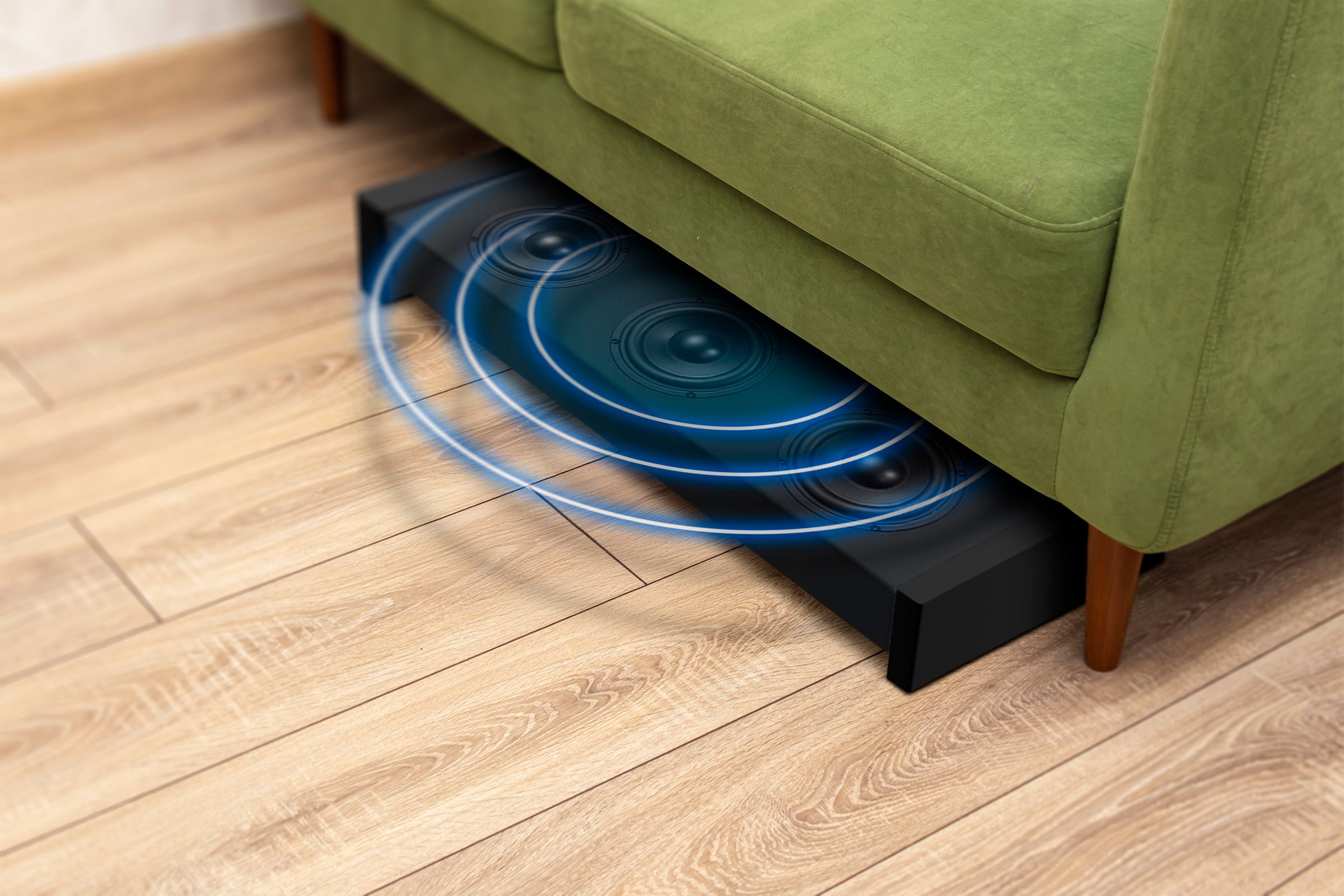If you’re new to the world of audio, you’re likely to encounter cryptic terms all over the place. While the list of audio jargon is endless, I think these ten terms are particularly useful to know when you want to buy audio gear and understand what the specifications mean.
1 Frequency Response
Mostly relating to the performance of speakers, the frequency response of an audio device like a Hi-Fi or soundbar is the range of audio frequencies it can produce. These frequencies are listed in Hertz (Hz) and a typical person has a hearing range of between 20Hz and 20KHz, so going beyond that doesn’t do much for most people.
This is a great spec to look at, because it tells you at a glance if the sound will have sparkling highs and deep bass. For the bass end of the spectrum, lower numbers are better, and obviously 20KHz and above are also ideal. However, don’t dismiss something just because it doesn’t have the full range, you might still like how it sounds, particularly if you listen to genres of music that don’t benefit from the extreme ends of the range.
2 Dynamic Range and Compression
Dynamic range is the difference between the quietest and loudest sounds a device can produce. Compression reduces this range to make audio more consistent in volume. A high dynamic range is desirable for lifelike sound reproduction, especially in music and movies. Over-compression can make audio feel flat and lifeless.
While you want your audio system and recordings to have lots of dynamic range (ideally 96dB or better), sometimes compression is something you’ll want to increase on purpose. For example, you might notice a “reduce loud sounds” option in your streaming apps, or that your TV has a “night mode” for its audio.
These options compress the dynamic range of, for example, a movie. So that you can listen at a reasonable total volume level while still hearing dialog and not blowing your neighbors out of bed when an explosion goes off in the film.
3 Sampling Rate and Bit Depth
This is a core topic, and I have a more complete explanation of bit depth and sampling rate, but the basic concept is that in digital music the sound wave that’s being recorded (or generated) isn’t continuous. Instead, it’s made up of little slices called “samples.”
The sample rate is how often the sound wave is sampled and saved as part of the digital recording. Generally, 44.1KHz is considered the minimum for an accurate recording as far as the human ear goes, and that’s what music CDs are sampled at. However, 48KHz isn’t uncommon these days, and it gives plenty of headroom over and above what we can hear, so you won’t miss anything compared to analog recordings.
“Bit depth” is the number of bits that are available to store the amplitude values for each sample. CD audio has a bit-depth of 16 bits, which allows for a dynamic range of 96dB. So, in other words, the quietest and loudest parts of the recording that can be captured are 96dB apart. That’s considered more than enough for music, but high-quality recordings these days often use 24 bits, offering 144dB of dynamic range. Way more than necessary for human hearing.
4 Latency
Audio latency is the amount of time it takes from where an audio signal is triggered, and you actually hear it. So, for example, if you shoot a gun in a video game and only hear it two seconds later, that’s 2000ms of audio delay. Some delay is normal, but above just a few hundred milliseconds, you’ll notice it easily. It doesn’t really matter that much for music, but for video audio, or anything interactive like video games, audio latency can really ruin the experience.
5 Soundstage
The easiest way to understand the concept of “soundstage” is to think of a literal stage with actors or musicians on it. If you close your eyes, you can still accurately perceive where each sound is coming from. That’s the soundstage.
Music and other audio producers make deliberate decisions around the soundstage so that the final recording sounds a particular way. Whether it’s the layout of a musical piece’s instruments, or the direction of gunfire in a movie, it’s important to have a good soundstage.
However, while a recording is mastered with a particular soundstage in mind, your audio equipment also has its own inherent soundstage, which colors the recording. So you’ll also hear reviewers talk about the soundstage of headphones or speaker systems.
6 Sensitivity
A speaker with higher sensitivity can produce more volume at lower power levels than one with low sensitivity. In other words, if you hook up two speakers to the same amp, the more sensitive one will sound louder. Higher sensitivity doesn’t automatically mean a speaker is better, but sensitivity is important in various situations, such as speakers on mobile devices, where every milliwatt counts.
7 Total Harmonic Distortion
Any audio playback device will add some distortion to a recording by virtue of its inner workings. There’s no such thing as a free lunch! THD or Total Harmonic Distortion is a way to express how much distortion a playback device will add to the base recording. It is, in fact, much more complicated than this, and THD applies to any sort of signal, such as the flow of current in a power supply.
For the purposes of audio, all you need to know is that THD should ideally be 0.1% or less, and some high-end gear might have a THD as low as 0.01%.
8 Bass. Midrange, and Treble
Bass, midrange, and treble refer to the parts of the overall frequency range. You probably know “bass” as it’s a common term, but midrange and treble are concepts usually reserved for audio gearheads. Either way, you’ll find these terms everywhere in the audio world. Some speaker systems have separate speakers for each section of the frequency range, with a “crossover” device (physical or virtual) that decides which speaker received what portion of the recording’s frequency range.
9 Wattage
You probably know that “Watts” is a measure of how much work something can do, and so also indicates how much energy it uses or produces. Speakers and amplifiers are rated in terms of their wattage, and as a rule of thumb, more watts means louder audio. The bigger the space, or the higher the desired volume, the more watts you want.
It’s important to look at the RMS (Root Mean Square) wattage rating, which gives you an idea of the average sustained wattage. Some manufacturers like to quote the PMPO (Peak Music Power Output) rating, which is the absolute peak wattage that can be produced, and then only briefly. It’s a common trick to create the idea that a system is powerful because of a large number on the box.
Higher wattage does not mean better sound quality! Plenty of high-wattage speakers distort, or sound muddy and unpleasant, so it’s not a very important consideration, unless you really need to pump up the jam in a sizable space. Even then, it might be better to add more amps and speakers, than try to stuff all the wattage you need into a single pair of speakers.
10 Noise Isolation and Cancelation
These terms mostly relate to headphones, but wherever they are used the meaning is the same. Noise isolation, also called passive noise cancelation for silly marketing reasons, is simply using physical materials to block sound. Sticking your fingers in your ears is noise isolation. Likewise, headphones block out sound physically (unless you have open-back cans) and sound-proofing materials do the same.
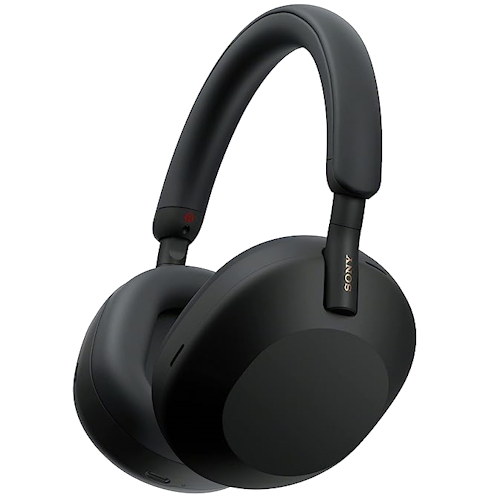
Sony WH-1000XM5 Wireless Noise Cancelling Headphones
$295 $400 Save $105
Dive into unparalleled audio bliss with the Sony WH-1000XM5 Wireless Noise Cancelling Headphones. Immerse yourself in premium sound quality, industry-leading noise cancellation, and long-lasting comfort.
Active noise cancelation is much more sophisticated, and uses microphones and computer chips to produce anti-noise. This destroys the incoming sound waves from outside and creates perceived silence. Perfect for a long plane trip or when you need to concentrate in a noisy open office.
With these core concepts under your belt, you can sound like an expert the next time you need to pick up some headphones or a soundbar!


